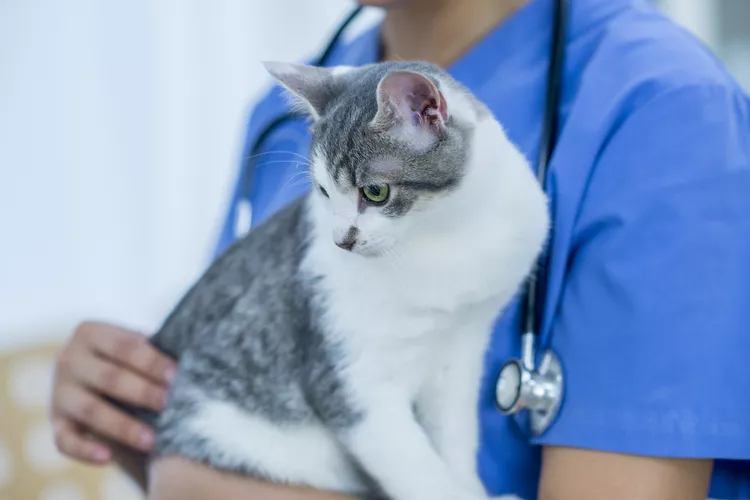What Are Skin Tags on Cats?

Cats can get skin tags just like people do. Fortunately, most skin tags are nothing to worry about. However, it's important to understand what a skin tag is and how to tell the difference between skin tags and other types of skin growths.
What Is a Cat Skin Tag?
A skin tag is a fleshy skin mass that can appear anywhere on a cat's body. They are generally composed of blood vessels and collagen and covered with skin. Skin tags are typically soft, flesh-colored bumps that are slightly raised or dangle from a stalk. Some skin tags start small and gradually grow larger while others remain the same size. Most are non-painful and benign (not cancerous). Benign skin tags in cats are usually only a problem if they're in a location that bothers the cat.
The actual cause of skin tags in cats is not known, but there are several theories out there. One thought is that friction plays a role in the development of skin tags, but they do not always occur where normal friction occurs (like in skin folds).
Is It Really a Skin Tag?
Before assuming the bump on your cat is a skin tag, consider the other things it could be to determine the best course of action.
Ticks
Many people mistake skin tags for ticks and try to remove them. Take a closer look before you attempt to remove what looks like a tick from your cat. Tugging on a skin tag will be painful to your cat and can irritate the skin tag and the skin around it.
Nipples
Don't forget that all mammals have nipples—including cats! Even male cats have tiny nipples on their bellies that look quite a bit like skin tags. If you find a bump on your cat's abdomen or chest, check the other side for a matching one. Most cats have four pairs of nipples that run along their underside.
Warts
Though rare, cats can sometimes get benign viral warts called papillomas. These may spread from cat to cat but cannot spread to humans or dogs. Most papillomas will fade over time and can return periodically in different areas.
Skin Tumors
Malignant skin growths can appear in many different forms. Don't assume a skin growth is a benign skin tag—be sure to watch how it grows and changes. Any new growth on your cat should be checked out by a veterinarian, especially if it changes in shape, size, or color or begins to bother the cat.
Treatment of Skin Tags in Cats
Many skin tags are harmless and do not need treatment. Some need to be removed if they are painful or irritated. Skin tags may become irritated when they are rubbing against another part of the body or a collar. Cats may also irritate skin tags while grooming themselves.
Never attempt to remove a skin tag yourself! Although some people are comfortable removing their own skin tags at home, trying to do this to your cat is almost definitely going to backfire. Your cat will be in pain and may bite or scratch you. DIY skin tag removal is risky for bleeding and infection.
If you find a mass that looks like a skin tag, watch it closely. Note the size, shape, and color of the skin tag and check it frequently for changes. If the skin tag is unchanged and your cat is not showing any signs of illness, it can probably wait for your next annual or biannual routine veterinary checkup. If there are changes to the skin tag, contact your veterinarian for advice and to schedule an examination.
Your vet will talk to you about your cat's history and perform an examination on your cat. The vet will look at and palpate the growth in order to determine the next step. If the vet thinks it is nothing to worry about, then there should be no treatment needed. If the growth seems suspicious or problematic, then your vet will recommend the next step.
If your vet recommends removing the growth, surgery may be necessary. Small growths can sometimes be removed by freezing or snipped off after giving a local anesthetic. Surgery for larger growths will require sedation or general anesthesia. The removed mass may be sent to a veterinary pathologist to determine what types of cells it contains. Histopathology can determine if the mass is benign or malignant. It can also reveal if the growth is viral or bacterial.